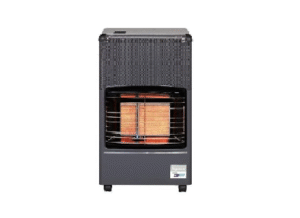
Superser gas heaters are widely used for heating rooms efficiently and economically. Their portability, ease of use, and strong heating output make them popular in homes, shops, and small offices. But like all appliances, Superser gas heater can develop issues over time. These problems can range from minor inconveniences to more serious safety concerns.
Understanding common Superser gas heater problems and knowing how to fix them can save time, reduce repair costs, and keep your heater running safely. This guide explains the most frequent issues and provides simple troubleshooting steps that anyone can follow.
1. Heater Not Igniting
One of the most common issues is when the Superser gas heater doesn’t ignite at all. This can happen for several reasons.
Possible Causes
-
Empty or low gas cylinder
-
Faulty ignition button
-
Blocked gas jets
-
Gas regulator issue
-
Incorrect cylinder connection
How to Fix It
-
Check the Gas Cylinder
Ensure the gas cylinder is not empty. Replace it if needed. -
Inspect the Connection
Make sure the regulator is tightly connected to the cylinder and there are no leaks. -
Clean the Jets
Dust or debris can block the jets. A soft brush or air blower can clean them safely. -
Test the Ignition Button
If you hear no clicking sound, the igniter may be faulty and requires replacement. -
Check the Regulator
Sometimes regulators become faulty and restrict gas flow. Replace the regulator if it seems defective.
2. Weak or Low Flame
A low flame means your heater is not generating enough heat. This can make the heater feel ineffective.
Possible Causes
-
Low gas pressure
-
Blocked burner holes
-
Faulty regulator
-
Poor ventilation
-
Partially closed valve
How to Fix It
-
Check Gas Pressure
Low gas in the cylinder can cause weak flames. Refill or replace the cylinder. -
Clean the Burner
Dust buildup can cause uneven or weak flames. Gently clean the burner holes with a brush. -
Replace the Regulator
Weak flames often indicate a failing regulator. Installing a new one usually solves the problem. -
Ensure Proper Ventilation
Lack of oxygen affects flame strength. Keep the area well-ventilated. -
Open the Valve Fully
Make sure the cylinder valve is open all the way.
3. Heater Keeps Turning Off
If your Superser heater lights but keeps shutting off automatically, it’s usually a safety response triggered by the unit.
Possible Causes
-
Oxygen depletion
-
Faulty ODS sensor (Oxygen Depletion Sensor)
-
Weak thermocouple
-
Faulty gas regulator
-
Drafts or strong air movement
How to Fix It
-
Improve Ventilation
Always keep a window slightly open when operating the heater. -
Clean the ODS Sensor
Dust can cause the sensor to malfunction. Gently clean the sensor with a brush. -
Replace the Thermocouple
A weak thermocouple won’t detect the flame correctly and shuts off the gas. -
Avoid Drafty Areas
Keep the heater away from fans, open doors, or strong breezes. -
Check the Regulator
Poor gas flow due to a faulty regulator can cause shutdowns. Replace if needed.
4. Strange Smell or Gas Odor
A gas smell is a serious concern and should be handled immediately. Superser gas heaters sometimes produce odors due to dust burning, but gas smell is different.
Possible Causes
-
Gas leak
-
Loose regulator connection
-
Faulty hose
-
Damaged valve
How to Fix It
-
Turn Off the Heater Immediately
Safety first. Shut off the heater and cylinder valve. -
Check All Connections
Ensure the hose and regulator are tightly connected. -
Inspect the Hose for Damage
Look for cracks or tears. Replace the hose if damaged. -
Do Not Use Flames to Test for Leaks
Never use a match. Apply soapy water to the connections; bubbles indicate leaks. -
Call a Professional if Leak Persists
If the smell remains, do not operate the heater.
5. Soot or Black Marks on Walls
Soot buildup is not only messy but also indicates incomplete combustion, which can be dangerous.
Possible Causes
-
Dirty burner
-
Incorrect gas-to-air ratio
-
Poor ventilation
-
Blocked jets
How to Fix It
-
Clean the Burner Thoroughly
Remove soot and dust using a soft brush. -
Improve Ventilation
Ensure there is enough airflow in the room. -
Check for Blocked Jets
Clean clogged jets with compressed air. -
Service the Heater
If soot continues to appear, the burner might need professional adjustment.
6. Unusual Noises During Operation
Rattling, whistling, or popping noise can be alarming but usually comes from minor issues.
Possible Causes
-
Loose components
-
Blocked burner
-
High gas pressure
-
Air trapped in the hose
How to Fix It
-
Inspect for Loose Parts
Tighten any visible screws or panels. -
Clean the Burner
Blockages can cause popping sounds. -
Adjust Gas Pressure
Replace the regulator if pressure seems too high. -
Bleed the Hose
Disconnect and reconnect the hose to release trapped air.
7. Flame Turning Yellow or Orange
A healthy flame should be mostly blue. Yellow or orange flames indicate combustion problems.
Possible Causes
-
Blocked air intake
-
Dust in burners
-
Poor ventilation
-
Gas pressure issues
How to Fix It
-
Clean the Air Intake
Dust restricts airflow, causing a yellow flame. -
Clean Burners
Remove debris or soot buildup. -
Ensure Adequate Ventilation
Oxygen is essential for proper combustion. -
Check Gas Pressure
Replace faulty regulators that cause incorrect pressure levels.
8. Gas Cylinder Freezing
It may look alarming when frost forms on the cylinder, but it is a sign of rapid gas usage.
Possible Causes
-
High gas demand
-
Regulator freezing
-
Low-quality cylinder
-
Insufficient room temperature
How to Fix It
-
Use the Heater on a Lower Setting
Reduce gas consumption temporarily. -
Place the Cylinder in a Warmer Area
A cold cylinder affects gas flow. -
Replace Faulty Regulators
Freezing regulators indicate malfunction. -
Check Cylinder Quality
Older cylinders freeze more easily and may need replacing.
9. Heater Produces a Burning Smell
A burning smell is common when dust settles on internal components, especially after long periods without use.
Possible Causes
-
Dust buildup
-
Blocked vents
-
Overheating
-
Electrical fault (if equipped with fan)
How to Fix It
-
Clean All Surfaces
Dust the heater thoroughly before turning it on. -
Inspect Vents
Make sure nothing is blocking the airflow. -
Avoid Using on Maximum Setting Initially
Run the heater on low heat to clear dust gradually. -
Check for Overheating
If the smell persists, discontinue use and inspect parts.
10. Heater Consuming Too Much Gas
If your heater seems to be using gas faster than usual, there could be several reasons.
Possible Causes
-
High burn setting
-
Gas leak
-
Faulty regulator
-
Dirty burners reducing efficiency
How to Fix It
-
Use Moderate Settings
Avoid keeping the heater at maximum flame constantly. -
Check for Leaks
Inspect hose connections and the regulator. -
Clean Burners
Clean burners regularly to enhance efficiency. -
Replace the Regulator
Faulty regulators often waste gas.
Safety Tips for Superser Gas Heaters
To avoid major issues and keep your heater in good condition, follow these safety practices:
-
Always operate your heater in a well-ventilated room.
-
Check the hose and regulator regularly for wear and tear.
-
Never leave the heater unattended for long periods.
-
Clean burners and jets monthly during winter.
-
Keep the heater away from curtains, furniture, and flammable objects.
-
Replace cylinders only in open spaces.
Proper maintenance is the key to extending the life of your Superser gas heater.
Conclusion
Superser gas heater are reliable and efficient when maintained properly. Most common problems—like weak flames, ignition issues, unusual odors, or shutdowns—are easy to fix with basic troubleshooting. Regular cleaning, proper ventilation, and timely replacement of worn parts such as the regulator, hose, or thermocouple can prevent many issues.
Understanding your heater’s behavior helps you detect problems early and maintain safe heating performance. With the right care, your Superser gas heater can continue to provide warm, comfortable, and safe heating throughout the winter season.
If you ever feel unsure or face persistent problems, it’s best to call a professional technician to avoid safety risks.



